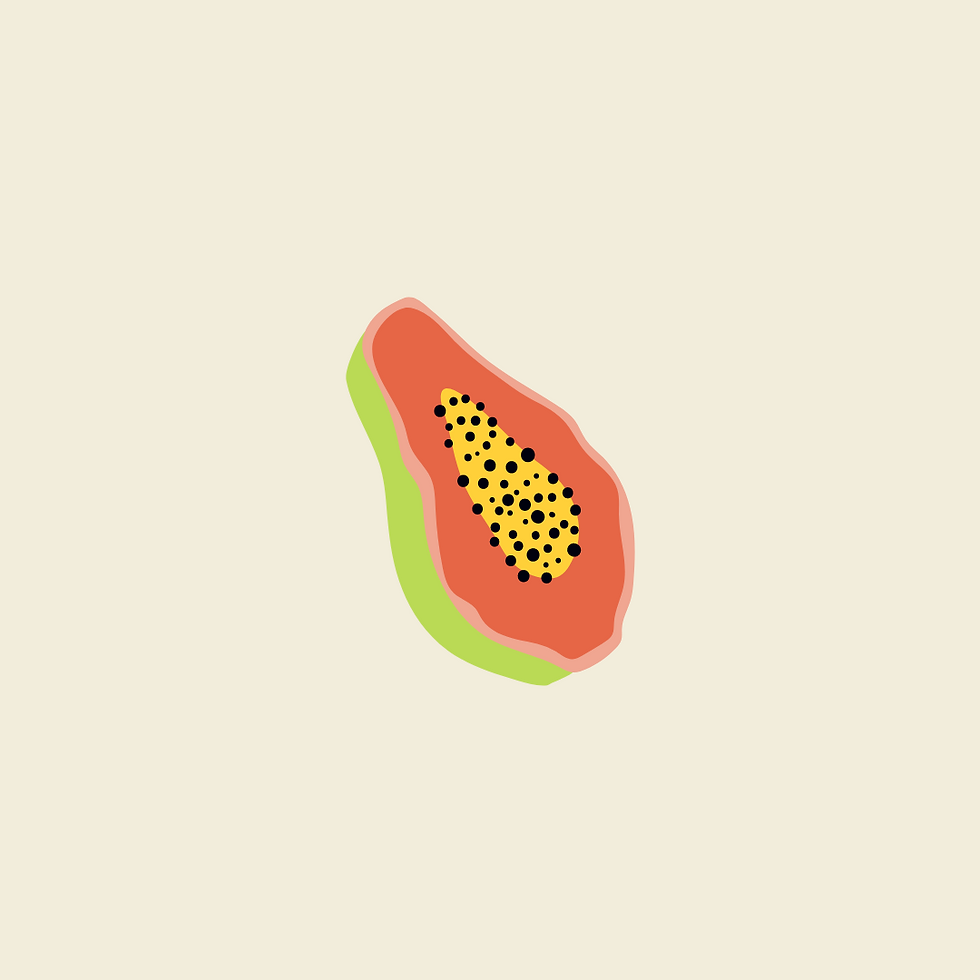Food Facts | Papaya
- Anni Weeks, NDTR

- Sep 23, 2020
- 3 min read
September is National Papaya Month.

Papaya
Carica papaya
Even the most extensive food history sources have little to say about the papaya. What we do know is that this salmon to orange colored fruit is not only pretty to look at, it is packed full of nutrients. A tropical addition to dishes, the papaya can elevate even the most routine meals to a magical level.
Nutrition:
Rich in vitamins and minerals that reduce inflammation.
Allergic Reaction : Surprisingly, papaya contains latex, which can cause a life threatening reaction to those who are allergic to latex.
In Season: Summer, Fall (usually June-September)
A Brief History
Believed to be native to Central America, it is said that Spanish explorers gravitated to this beautifully colored fruit and planted it throughout the lands they invaded.
How To:
Pick a Good One
Papayas come in two shapes, a smaller, pear-shaped variety native to Hawaii, and the bigger variety grown in Mexico and Central America (common to supermarket shelves). They usually weigh about one pound, but can weigh from three to five pounds on average. Color is not known to be a consistent indicator, but papayas with yellow spots will generally be less ripe.
When it comes to picking a good papaya, avoid dark spots, overly soft spots, or shriveling of the skin. A papaya at the peak of ripeness will have slightly soft skin that gives a little when you press it gently. The outside should look yellow-green, and the inside once sliced open will yield an orange hue with black seeds in the middle. Asian markets make green papaya available from time to time, and this variety has a harder, paler interior and white seeds. These papayas are usually purchased when making specific dishes.
Papayas are listed in the Environmental Working Group's "Clean Fifteen Guide" , which means that papayas tend to have low levels of chemical residues when tested for pesticides, pathogens, or pests. This also means that you should be alright if you opt for a conventionally-grown papaya instead of an organic one.
Store
Papayas perish easily, so once they ripen they don't last long.
in the fridge once ripened (then eat within 2-4 days)
1-2 weeks at most
freeze into cubes for later use (i.e. smoothies)
in a paper bag with a banana to speed the ripening process
on the counter for 1-2 days
Wash
Exterior before slicing into it
Eat
in a fruit salad
in pineapple salsa
peeled
with yogurt
raw (sliced into cubes and discard the seeds)
with lime juice for tang
with cayenne pepper for spice
shredded raw and served in a salad
with sprouts, veggies and fresh herbs
the seeds, dried and ground into a black pepper substitute
in juice form
add it to smoothies
turned into jam
pickled
dried for snacking
green papaya for a more sour taste
Experiment: Papayas contain papain, which breaks down tough meat fibers. This makes papaya a natural meat tenderizer, so try adding some bits or juices to your next meat marinade or dish.

Fun Fact: The papaya is technically a berry, botanically speaking. It grows from a tree but the papaya is actually the fruit of the herb.
Related Resources
References
FoodPrint. Real Food Encyclopedia | Papaya. 2020 GRACE Communications Foundation. Accessed at https://foodprint.org/real-food/papayas/.
Shopper's Guide to Pesticides in Produce. Clean Fifteen: EWG's 2020 Shopper's Guide to Pesticides in Produce. Environmental Working Group. 2020. Accessed at https://www.ewg.org/foodnews/clean-fifteen.php.
EatFresh. Papaya. CalFresh, Healthy Living. California Department of Social Services. 2020. Accessed at https://eatfresh.org/discover-foods/papaya.




Comments